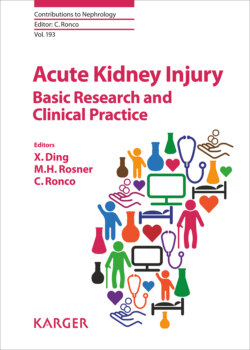Читать книгу Acute Kidney Injury - Basic Research and Clinical Practice - Группа авторов - Страница 40
На сайте Литреса книга снята с продажи.
AKI Biomarkers in the Surgical Patient
ОглавлениеMajor surgery is a recognised risk factor for AKI due to a combination of potential renal insults including relative hypotension and hypovolaemia, sepsis, the use of nephrotoxic agents, blood or blood product transfusion and reperfusion injury [30–33]. As alluded to, much of the surgical literature has focused on the verification of AKI biomarkers as a method of identifying AKI in a timely manner in these high-risk patients. However, several common themes regarding limitations in the discovery and validation of novel biomarkers for renal injury exist within this body of evidence. First, much of the initial data was described in children. The reasoning for this is that levels of some biomarkers can be significantly affected by comorbidities, hence, the use of this population may limit the effects of such confounders [34]. Second, the majority of studies address patients undergoing cardiopulmonary bypass. Third, the timings and methods of measurements vary considerably between trials including a wide range in cut-off values used to determine a “positive result.” To date many different candidate molecules have been explored, some of which are highlighted below.
Fig. 1. Hypothetical profile of acute kidney injury (AKI) Biomarkers following injury. Biomarker A rises acutely following injury but also decays rapidly so much so that it may fall below the threshold for diagnosis of AKI before conventional markers have started to rise. This may reflect renal stress. Biomarker B may be indicative of renal damage and as such has a slower onset but remains elevated above the diagnostic threshold. The theoretical profile of serum creatinine (SCr) is also shown, which may not attain diagnostic significance.
